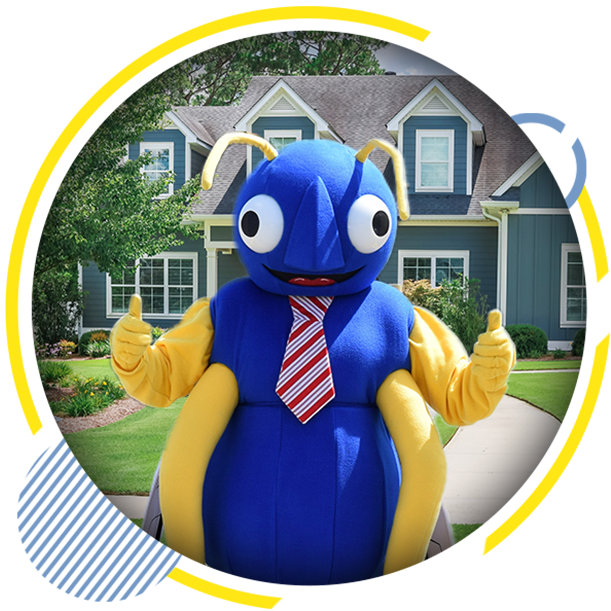
Common Pantry Pests Found In South Portland Homes
There is nothing quite as horrifying as opening a package from your pantry and finding webbing, or bugs, inside. There are few people who like eating bugs, or the unhatched eggs of bugs. One scary thing about pantry pests is that they can be hard to see. Some eggs are almost invisible to the naked eye. And some larvae live inside the food they are feeding on. Here are a few common pests you could find in your pantry, and what you need to know most.
Beetles
There are a number of beetles that can invade pantry food products. The most common found in South Portland homes are flour, drugstore, sawtoothed grain, cigarette, spider, and dermestid beetles. While they share the name beetle, they do not share the same habits, habitats, food preferences, or treatment needs. Therefore, proper control requires proper identification of the infesting pest.
The most effective way to prevent a beetle infestation is to closely examine food packages before you purchase them. Look for holes or damaged seals that would allow insects to get inside.
Once a beetle infestation has taken root, it is best to have a professional use industry standard pest protocols and products to contain and eradicate the problem. But, if you have not been infested yet, you can significantly reduce your chances of a widespread infestation by storing all of you pantry products in sealable plastic containers. This will also keep these foods fresh longer.
Weevils
It is important to point out that weevils are technically beetles. Both weevils and beetles are in the order Coleoptera, but weevils are of the family curculionidae, which contains over 1,000 individual species in North America alone. Fortunately, you're not going to find all of these species invading your pantry.
In South Portland, the three most common weevils you may find are named by the food they prefer, names like rice weevil, maize weevil, granary weevil, and bean weevil. All of these weevils, save for one, share the characteristic that differentiates weevils from beetles visually, a snout that is as long as its body. The odd weevil out is the bean weevil. It has a short snout and an oval shape, like its beetle cousins.
Weevils are a frustrating pest that can get into your home from the outside. Typically, they will invade in mass numbers. If you find these pests on the walls of your pantry, a vacuum cleaner is your first line of defense. Be sure to dispose of the bag outside when you're done.
You'll also want to do a detailed inspection of the exterior of your home and seal any holes or gaps you find. Make sure all screens are in good working order. And look closely at weather stripping and door sweeps to make sure they have good contact all the way across.
Moths
We've put moths last because there is only one moth that is commonly found in South Portland pantries. This moth is so connected to pantry invasion, it is often called a pantry moth. But, its proper name is the Indian meal moth, or Plodia interpunctella. And, though it is last on our list, this is the pest you are most likely to find in your pantry foods - well, more specifically, its larvae - also known as caterpillars.
Adult Indian meal moths don't eat pantry foods. In fact, they don't eat anything. Their only job is to mate and lay eggs. But, since they lay their eggs in pantry foods, you might see these two-tone, part orange part brown moths flying around in your pantry. Adult pantry moths are a warning sign that something in your pantry isn't fit to eat. But, don't just look for pantry moths in your pantry. The Indian meal moth is attracted to light, so you may have them fluttering around in other parts of your house as well.
If this pest is in your food, they will appear as tiny, pale caterpillars with dark brown heads. You'll have to look closely, as they are under ½ an inch in length.
While it is definitely no fun finding the caterpillars of Indian meal moths in your food, these creatures are not dangerous to consume. They do not crawl on counters or climb in trash like other illness-spreading pests. Most of the lifecycle of an Indian meal moth will take place in the packaged food it was hatched in.
Pantry Pest Control
It can be extremely hard to find the source of a pantry pest infestation, and this is a pest problem that can plague a home for a long time. If you're finding pantry pests in your South Portland home, let the educated pest specialists here at Big Blue Bug Solutions locate the source of your infestation, and deal with it completely.
Life tastes better without pantry pests. Protect your pantry with Big Blue Bug Solutions.

chECK oUT THE bUZZ!
Unbeatable Pest Control, Unmatched Reviews
-
"They have exceeded expectations. Highly recommend."Alley Bergemann, called before arriving on the day of the appointment, showed up on time, and took care of re-baiting the bait traps as needed. She is patient, polite and answered a few questions I had, all with a pleasant demeanor.- Jonathan P.
-
"Always been amazed by the competence and professionalism of this company."
Their man, Elijah was a gentleman and very knowledgeable professional. He took the time to carefully listen to me when I explained where the ant infestation was found. He explained clearly what he was going to do to address the issue.
- Pete M. -
"GREAT company!"The Big Blue Bug Solutions is a GREAT company with very helpful, courteous technicians. This a company that actually helps you with your problems and not try to sell you something you don't need. I am very pleased, and NO, I have no relatives that work at- Robert M.
-
"Knowledgeable, accurate and incredibly pleasant."I just cannot believe the most amazing experience customer service experience I had with Laura who could not have been more knowledgeable, accurate and incredibly pleasant. It is very rare I leave a review but this encounter deserved one!- Kimberly H.
-
"Always very polite and accommodating."We’ve been using Big Blue Bug for pest control for many years and have been very satisfied! Vince visited today for our regular check in and he is an excellent technician. Thanks, BBB!- Stacey C.
-
"Knowledgeable, respectful, courteous!"
I highly recommend Big Blue Bug Solutions - first - for their customer service. They are professional and efficient and always try to fit me in at a time that is convenient for me. Second, RODNEY IS THE BEST TECHNICIAN!!!!
- Meredith L. -
"Our first service was a great experience!"Peter called to let us know he was on his way and arrived as scheduled. He was very knowledgeable and setup a comprehensive array of traps in each target area to begin capturing the pests and put an end to our troubles.- Mike H.
-
"Personable, friendly, and knowledgeable!"Shoutout to our tech, Jeremy Cote, who has been servicing our bakery in Richmond and has helped us maintain a pest free environment. He is personable, friendly, and knowledgeable. We highly recommend big blue bug to friends, family, and customers!- Becky M.


WE'RE AVAILABLE
EVERY DAY, ALL DAY,
365 DAYS A YEAR
Say goodbye to automated systems! Our team is at your service round the clock, every single day of the year, guaranteeing a personalized and immediate response to your queries.
